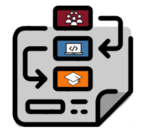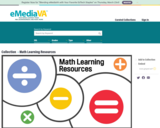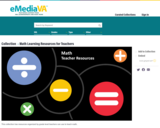
Reflections Algebra Readiness Remediation Plan
- Subject:
- Mathematics
- Material Type:
- Lesson Plan
- Provider:
- VDOE
- Author:
- VDOE
- Date Added:
- 10/07/2024

Reflections Algebra Readiness Remediation Plan

Transformations Algebra Readiness Remediation Plan

Translations Algebra Readiness Remediation Plan

Monster Transformations Task Template and Student Version of Task

Transformations Mathematics Instructional Plan

The goal of this activity is to build critical thinking skills and excitement for Computer Science / Computational Thinking, while laying a foundation of fundamental programming concepts. By scaffolding basic concepts like sequencing and algorithms in an unplugged activity, students who are intimidated by computers can still build a foundation of understanding. In this lesson, students will learn how to develop an algorithm and encode it into a program.By "programming" one another to draw pictures, students experience some of the core concepts of programming in a fun and accessible way. The class will start by having students view a video of a simple program demonstrating how to develop instructions for building a peanut butter and jelly sandwich. Students will start with simple shapes, and progress to the coding of a specific drawing that other students will then try to replicate (“running the program”). If there is a desire to have a more of a Math slant on the lesson, the drawing could take place on graph paper. Students would then use the coordinates to complete the drawing.

Just in Time Quick Check Transformations

Students will find helpful resources for learning and practicing math skills and processes in this eMediaVA collection.

This collection has resources organized by grade level teachers can use to teach math.

Before goods are shipped in trucks or containers, they are usually placed in protective packaging and arranged on pallets for efficient transport. Stacking goods on a pallet is a repetitive job that can cause injury to workers. Because of this, many factories that require a high volume of palletization have turned to using robots to perform palletizing tasks. In this lesson plan, students learn how to program a robot to be efficient and effective at this real-world task.

Applying TransformationsMathematics Instructional Plans (MIPs) help teachers align instruction with the Mathematics Standards of Learning (SOL) by providing examples of how the knowledge, skills and processes found in the SOL and curriculum framework can be presented to students in the classroom